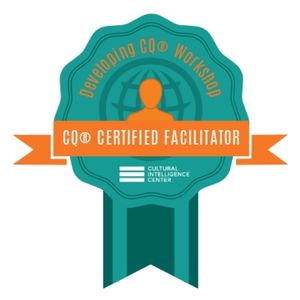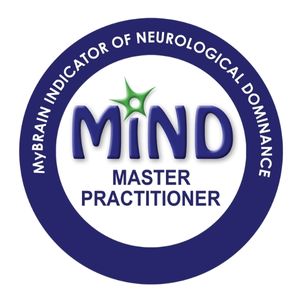Listen here:
Watch here:
Have you ever experienced a team member resistant to your collaboration? Somebody not replying to your emails? Not giving you the information you urgently need? Not accepting your meeting invites?
When this happens we may start thinking that they’re doing this deliberately, it’s personal, maybe even ‘they don’t like me’ or ‘they don’t value me.’
However, if this person is key to getting your tasks done and projects delivered, you need to find a way to move through the resistance- here are my strategies to help you.
What you will learn in this episode:
- What we think when we meet resistance from others
- What can’t we see
- Start with understanding
- Assume positive intent
- Consider how they like to communicate
- Invest in the relationship for the long term
- Work on the magic ratio
- Design the communication
- Developing connection takes time
Find out more:
Transcript:
Hello and a very warm welcome to Cultural Communication Confidence, with me Victoria Rennoldson, and a very warm welcome to this particular episode, where we’re talking about: meeting resistance from others – when collaboration is blocked. Now, I’m talking about this episode topic because it’s a question that I had with a client recently, and maybe you’ve experienced this as well, that you’ve had a situation where you are relying on somebody else to collaborate with, and they’re not replying to your emails. Or maybe you’ve invited them to meetings and they don’t show up. Or they show up but they’re not very engaged. Perhaps you’re reliant on other people to get information you need to complete your own tasks and projects. It could even be quite urgent, and yet you’re not getting a response. Recognise that? Well it can feel quite frustrating of course, and it’s amazing how quickly we jump to thinking around why this is happening. So it often happens that we make connections and join up the dots and start thinking things like: ‘well, they always do this.’ ‘They always find a way not to be involved.’ ‘Perhaps they feel negatively about me’, ‘it’s personal – they don’t like me’. ‘They don’t value what I do…’, and you can see how quickly these thoughts go. That we very much jump to this conclusion about what the other person is thinking. And of course, when we do this, we’re assuming negative intent. We’re assuming that the other person is doing this deliberately. However, this is not particularly helpful, and as you can imagine, if you very genuinely need to work with this person on an ongoing basis, then actually, you do need to find a way through.
You need to find a way through the resistance, so you can collaborate and work together effectively. So let’s talk about how we do this. So the first thing I want you to do is to pause and breathe. And why? Because we are so much often in our heads, that it’s difficult for us to really step out and see what’s going on. So take that step back, take a breath, make sure you’re coming out of your head, so you can start to think clearly again about this situation and the interaction. Then I want you to ask yourself: what can’t you see? What I mean by this is, that often we can’t see what else is going on in somebody’s world. So we can’t see their inner world, what’s happening also within their work sphere, we might not be able to see what’s going on for them personally, what sort of pressures or stresses they’re experiencing in and outside of work. We may not see the full picture of everything that is going on for them, that could be impacting their ability to engage with you. And therefore are not able to perhaps prioritise your requests for information, for support or engagement in your projects.
So that’s where I want us to start, to realise we are not seeing the full picture of what’s going on. I then want you to also think about how: can you understand them better? Really think about this person – particularly if you’ve been working together for a little while. What’s motivating them? What are they interested in? What are their values? And if you don’t know, you know, take a guess, from what you know of them. What is important to them? This could be a situation where your priorities and motivations are misaligned. It could be that you might have slightly different values about what is important to you. So you may be somebody who is very focused on deadlines and making sure you hit every project milestone, whereas the other person might have a much more flexible approach to the way they work. Just by recognising this, we can understand that maybe this is not intentional. Maybe it’s just a difference in way of working, a different approach, and therefore you can start to work on solutions around how you adapt yourself around that. But also within this, I want you to really challenge yourself about the intent of the other person. We already mentioned earlier in this episode, it’s easy to jump into: ‘well they’re doing this deliberately – there’s a negative intent behind the action or lack of action’. But the reality is, we just don’t know. And of course, there will be situations and people who do act with negative intent. However, in my view, it doesn’t help me, or you, to think about it in this way. I would much rather consider that there is positive intent, but there are other things that are going on for that person, that I just don’t realise. So I really want you to challenge yourself on this – if we assume somebody has positive intent, then that shows up in the way that we interact and react to them. Even if we think we’re keeping that hidden, it often is very obvious to the other person that we think negatively of them. So I would like you to assume positive intent.
And the other aspect I want you to think about is how the other person likes to communicate. This is such a simple and easy point, but we often forget this. We have our preferences in the way we like to communicate. For some of you that might be just sending and pinging lots of quick messages on Teams, for example. For others, you might prefer to have everything in writing, so you write your emails and everything is copied in to everybody else, so everybody has the full picture. Maybe you’re collaborating on Docs for example, or a planner, like Trello or Asana. Whatever way that you prefer to communicate is your personal preference, and what you have to remember is that the other person may have a completely different preference to you. So consider this. This could be a very simple and easy quick win for you. Maybe the other person likes to communicate in a completely different way to you, maybe it could be resolved, the situation, by just picking up the phone and having a quick chat. Or, if you happen to be in the same location, by you going and having a chat with them by their desk. So really consider this as a quick fix. Now, these are about what you can do short term, and what I’ve spoken about so far, have really been about mindset – you thinking about what you can change in yourself, and the communication approach. But I also want you to think about how you’re going to change the situation long term, because I’m sure that for many of you, if there is resistance in one interaction, this is not just a one-off, this is probably about somebody you have to work with on a regular basis, on a project, or within a team.
So how do we really make sure we have the foundation set, so that we can keep moving forward? Well, for me, this is about investing in the relationship for the long term. And I’m going to mention: there is a special magic formula for making relationships work. This isn’t something I’ve invented – in fact, it’s come from a Relationship Researcher called Gottman, who you may have heard of, quite famous in the space of relationships, love relationships and marriage and and so on, but absolutely, his work is applied in other spheres, including in the workplace. And what he said is that the magic ratio is 5 to 1. So that for relationships to work, we need to have five positive interactions for every one negative interaction. I want you to think about this in the context of your situation, that you’re experiencing with resistance.
If you are experiencing a lot of resistance, then I want you to think about: how do you make it work? How do you bring more positive interactions? Five, in fact, for every negative interaction that you have. That’s going to require you to consider how you build that relationship, what are the moments that you’re going to use to have more of the personal conversations, and get to know the other person. I also want you to think about designing the conversations that you have. So, often we have the same type of communication, in the same type of way, time and time again, so it’s not surprising we get the same results. What I want you to think about instead is, I want you to think about how you design a meeting or a conversation that feels different. Think about where you’re going to have this meeting – does it have to be in a meeting room? Or would it be better in a more informal relaxed environment, such as the canteen or even offsite? Think about: what is the weather that you bring to the meeting? And what I mean by this is, what is your energy and your intention that you’re bringing to the meeting, to really ensure there is a more positive interaction? I want you to acknowledge and hear, really, what the other person is saying, so that requires active listening of course, but also acknowledging their view point, even if it’s very very different to yours, so acknowledging what is being said to you, having empathy for those areas which are challenging or creating issues, and then working together to find the solutions.
Resistance sometimes is about the fact that we’re not aligned on our goals as well, so what you might need to do is to really discuss that and overtly say: do we have an aligned goal? If you don’t, then you may need to ladder up, and find out what is the common vision that you’re both trying to achieve, and both trying to work towards. There will be something, particularly if you are within the same organisation, even if it’s at the complete macro level, there is a vision that the company has, that you will be working towards. So, as you can see, there is a lot here we can do, both short term, in our mindset, in our intention, in how we think about the other person and their interaction, and how we approach the communication. But there is also something we need to do about investing in the relationship to help us move through resistance, not only this time, but every time, so actually, eventually those moments of resistance become fewer and fewer and fewer. Now, I would love to ask you: where are you experiencing resistance in your interactions and relationships today at work? How are you investing in your relationships, to really ensure that there’s deep connection, and you understand truly the other person that you’re working with? I would love for you to take some actions away from today, and if you are experiencing these situations, consider how you’re going to put into play some of the strategies and ideas that I’ve shared with you here.
And I would love to know how you get on, because I love to hear your stories. So tell me – tell me what you’re challenged with, and what you’re going to try out, and how did it go? You can do that over on LinkedIn, on my messenger, it’s LinkedIn – my personal profile is Victoria Rennoldson. And if you have found this episode particularly helpful, why not share it with one other person? Who else needs to hear this today, and is experiencing these types of challenges? Who else would find this helpful? Feel free to share it with them, because I would love to get this podcast out as widely as possible, because I would love to help others and make sure as many people benefit from it as possible. And finally, if this episode has resonated with you, and you are experiencing challenges with resistance in team members, and having challenges with getting people on board with what you’re doing, then I would love to talk to you in a Clarity call. I’d like to get to know what’s going on for you, what is particularly challenging, and help give you clarity around what you can do next to move forward, so if you’d like to take that opportunity, I have three slots currently, and you can do that by contacting me over on LinkedIn, again, my personal profile is Victoria Rennoldson, and I’ll put the link in the show notes. It’s been an absolute pleasure to be back today, sharing this episode, all about moving through resistance from others. I hope you have found this helpful and valuable, and I’m very much looking forward to seeing you next time, on Cultural Communication Confidence.




